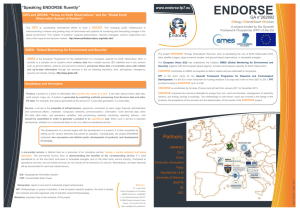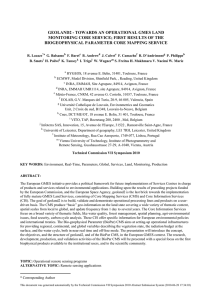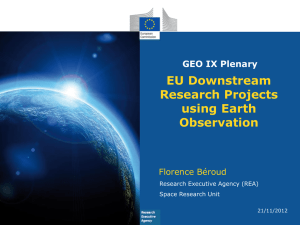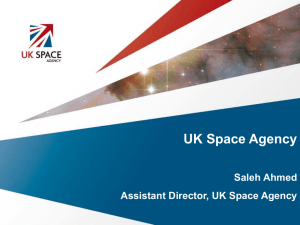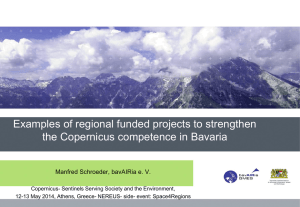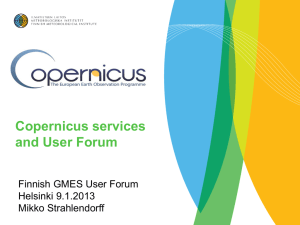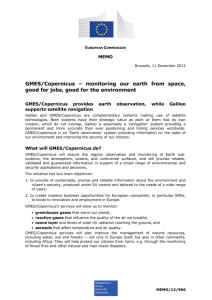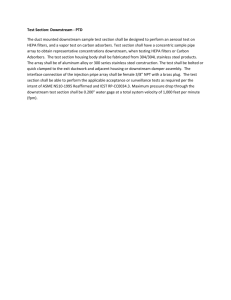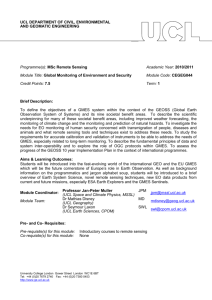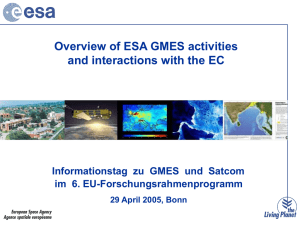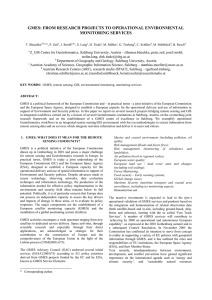GMES - WMO
advertisement
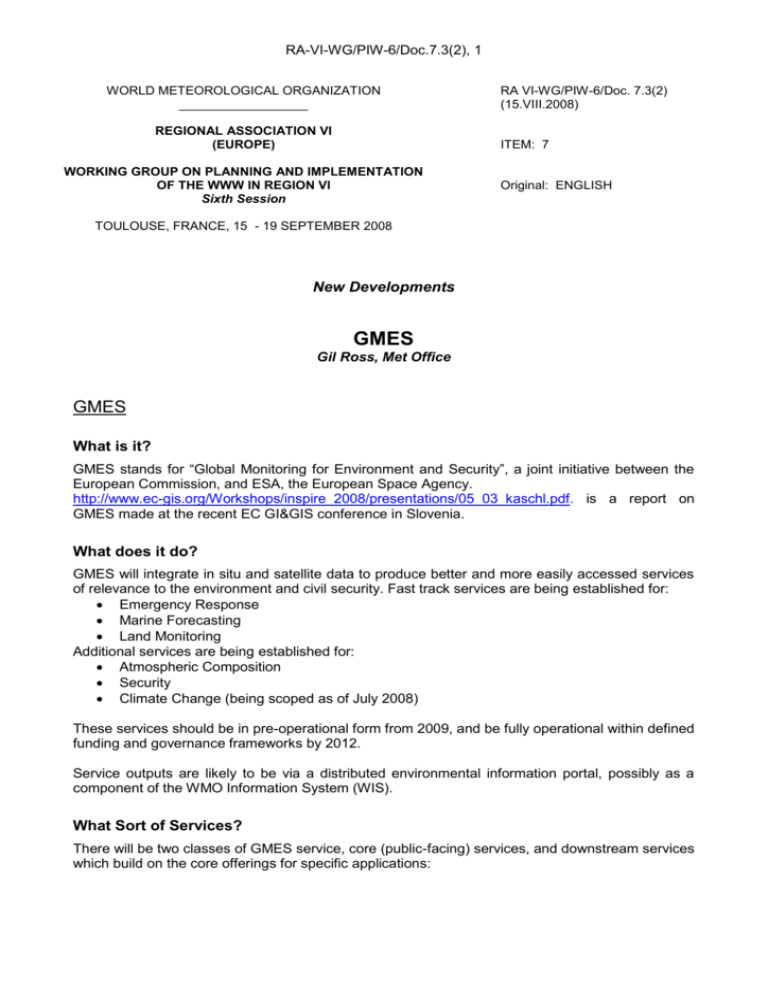
RA-VI-WG/PIW-6/Doc.7.3(2), 1 WORLD METEOROLOGICAL ORGANIZATION __________________ REGIONAL ASSOCIATION VI (EUROPE) RA VI-WG/PIW-6/Doc. 7.3(2) (15.VIII.2008) ITEM: 7 WORKING GROUP ON PLANNING AND IMPLEMENTATION OF THE WWW IN REGION VI Sixth Session Original: ENGLISH TOULOUSE, FRANCE, 15 - 19 SEPTEMBER 2008 New Developments GMES Gil Ross, Met Office GMES What is it? GMES stands for “Global Monitoring for Environment and Security”, a joint initiative between the European Commission, and ESA, the European Space Agency. http://www.ec-gis.org/Workshops/inspire_2008/presentations/05_03_kaschl.pdf. is a report on GMES made at the recent EC GI&GIS conference in Slovenia. What does it do? GMES will integrate in situ and satellite data to produce better and more easily accessed services of relevance to the environment and civil security. Fast track services are being established for: Emergency Response Marine Forecasting Land Monitoring Additional services are being established for: Atmospheric Composition Security Climate Change (being scoped as of July 2008) These services should be in pre-operational form from 2009, and be fully operational within defined funding and governance frameworks by 2012. Service outputs are likely to be via a distributed environmental information portal, possibly as a component of the WMO Information System (WIS). What Sort of Services? There will be two classes of GMES service, core (public-facing) services, and downstream services which build on the core offerings for specific applications: RA-VI-WG/PIW-6/Doc.7.3(2), 2 Core services will be multi-purpose, and linked to EU needs, and the EU will be responsible for them. Downstream services will be tailored for specific applications and users at local regional, national, or EU level. The EU wishes to see the development of a vibrant market in downstream services but will not directly drive this and will not be responsible for the service content. Aims Consolidation of the observing infrastructure, core services downstream services and end users. Funding Planned expenditure will increase from ~120MEuro in 2008 to 320 M Euro by 2013 subject to annual adoption of the budget. Total FP7 space theme budget is 1.4Bn Euro, with 650m for space infrastructure, 400m for information services and 150m for data procurement, 200m for space foundations and cross cutting issues. There will be no significant funding of operational services before 2012. Current Status of Services 1) Atmospheric Composition Scope: Air quality, climate forcing, stratospheric O3 and UV, renewable energy support. Progress: Implementation group has reported. The MACC proposal (a follow on from GEMS and ESA Promote) has been evaluated, and contract negotiations are taking place. MACC will cover the preoperational development of the service. 2) Emergency Response Scope: Reference maps within 6 hours over crisis areas. Damage maps within 24 hours, with daily updates. Forecast evolution of simulations. Links with preparedness and alert systems such as Meteoalarm. May evolve towards a European integration of observational and information services for emergency situations along the lines of the Barnier report. Progress: Implementation group has reported. The SAFER proposal which will form the pre-operational service has been evaluated and contract negotiations are taking place. RA-VI-WG/PIW-6/Doc.7.3(2), 3 3) Marine Forecasting Scope Systematic reference information on the state of the ocean globally and in the European region, including observation and model data, nowcasting and forecasting, and re-analysis. Ocean scenario simulations in concert with climate centres Evolution towards a marine resources and coastal zone management. Component of the EU Maritime Policy Progress: MyOcean Consortium, a follow on from MERSEA, Polarview and MARCOST will develop the preoperational service. The consortium is now in contract negotiations, and the planned start is the beginning of 2009. 4) Climate Change Scope: Still under discussion. Four possible components are re-analysis, attribution, prediction, and impacts. Most probable outcome is that service will cover first 3 aspects but not impacts. Progress: Scope has not yet been determined. Potential contributors will be presenting at the Lille demonstrators’ conference. Met Community has marginal interest in security and land monitoring services. 2008 Milestones Sept 2008 Space Council Sept 2008 Lille demonstrators’ meeting Nov 2008 – GMES Communication from the Commission.

